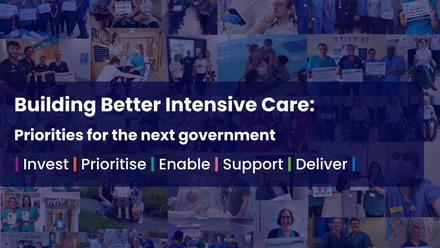CRITCON Levels: what they are for and how they are used
We want to provide a clear understanding of what CRITCON levels (0 - 4) are for and how they are used.
Each and every patient is important, and the NHS will always do its best to give compassionate care of the highest standard. Intensive Care Units are under huge pressure, and every one of us can help as an individual. This includes avoiding all non-essential contact – especially indoors – and following the hands-face-space guidance. Slowing down the spread is the only way to keep the NHS from becoming overwhelmed.
CRITCON was designed as an easy to collect, easy to report, and easy to interpret, tool for ICU capacity under conditions of system stress (e.g. winter, pandemic, or major incident) and was originally designed in London and Surrey Critical Care Networks and then implemented nationwide, as part of the NHS response to the H1N1(2009) influenza pandemic in the winters of 2009/10.
CRITCON is designed to reflect real-world ICU pressure, and to be independent of bed numbers and occupancy which can be hard to interpret. The emphasis from the outset has been to ensure that pressure ‘hotspots’ are easily visible and Trusts/Boards act in step with each other so that as CRITCON levels rise regionally or nationally, workload is shared and steps such as postponing planned surgery are co-ordinated.
CRITCON was adapted by the Intensive Care Society as the CRITCON-PANDEMIC matrix to reflect the already higher starting point early in this pandemic (when many ICUs had already planned to expand outside their usual areas). It was included as a key part of our clinical guidance: Assessing whether COVID-19 patients will benefit from critical care, and an objective approach to capacity challenge , which is currently under review.
There is intentionally a very clear threshold for CRITCON level 4 which must be nationally agreed and declared. At CRITCON level 3, when a hospital runs out of available beds (both baseline and surge capacity ) patients are transferred to other hospitals with capacity - either locally, regionally or nationally. Long distance transfers may be required. The aim is that no hospital reaches CRITCON level 4 until all possible mutual aid has been exhausted, and every other ICU in the region and across the country is at CRITCON level 3 i.e. maximum physical capacity including all expansion areas in use. This is what we are seeing happen at the moment.
We cannot emphasise enough that hospitals, albeit under immense pressure, are still open to provide care to those in need.
How the CRITCON-PANDEMIC matrix is used
The CRITCON-PANDEMIC matrix allows available resources to fairly reflect individualised decision making and prevents inappropriate recourse to triage on the basis of resource allocation whilst resources are still available nationally. The matrix is used to assess the qualitative pressure and stress within the ICU not across a system but within an individual ICU as each ICU is unique.
There are five levels to the CRITCON-PANDEMIC matrix: levels 0 to 4. The principle is to allow each ICU to declare itself in simple terms compared to its normal capacity (CRITCON-PANDEMIC 0-4, corresponding to '0-normal', '1-preparatory', '2-sustained surge', '3-super surge', and '4-code red'). This enables units under unusual stress to be instantly visible and to trigger mutual aid, for example through neighbouring hospitals stopping elective activity and opening surge ICU beds supporting a regional response.
Details of how this process is coordinated is an NHS operational responsibility through the Regional Medical Director or national offices of the devolved nations.
We have issued this release primarily to explain the terminology.



